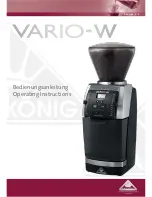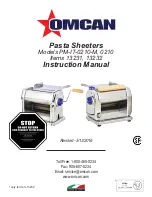
Spirit installation manual
page 9
Before installation
See
Advice for installation personnel
” (page 2) about checking and bench testing the machine prior to
installation on location.
Water quality
Have the local water tested and ask the water supply company if there can be seasonal changes in
water quality and when so, in what order these changes occur.
Optimally, the water fed into the espresso machine would fall in the high end of th
e SCA “core zone”,
see Figure 4, and have a pH of 7.0-7.5 (at 25°C).
Figure 4. Alkalinity vs-
Total Hardness graph showing the SCA “core zone” in green outline.
Besides the Alkalinity and Total Hardness requirements, the water should have the following
properties:
Parameter
Target
Acceptable range
unit
Total Hardness
72
50-175#
ppm
Total Alkalinity
40*#
40-75#
ppm
pH
7.0*
6.5-7.5*, 6.5-8.0#
--
Electrical conductivity
< 3 times Alkalinity
(in ppm) #
μS/cm
1
Total Dissolved Solids
150*
75-250*
ppm
1
Calcium Hardness
51-68*
17-85*
ppm
Sodium
10*
at or near 10*
ppm
Sulphate
30
0-50
ppm
Chloride
0
0-30
ppm
Silica
0
0-5
ppm
Odour and colour
clean*, fresh*, odour free*, clear*
Taste influencing organic compounds*#
not present
Chlorine#, Hypochlorite#, Chloramines#
Iron#, Lead#, Manganese
* SCAA Technical Standards Committee, 2009: water properties for optimum taste.
# Values from “The SCAE water Chart” (2015?).
Table 1. Showing parameter values for water meant to brew coffee with.
1
The conversion from electrical conductivity to TDS depends heavily on the water composition and temperature, yielding results
that can vary significantly. Additionally, even if the estimated TDS value is accurate, it does not contain any information about
what the TDS is actually made up of.
0
20
40
60
80
100
120
0
20
40
60
80
100
120
To
ta
l H
a
rd
n
es
s
(p
p
m
C
a
C
O
3
)
Alkalinity (ppm CaCO
3
)
SCA
core
zone











































